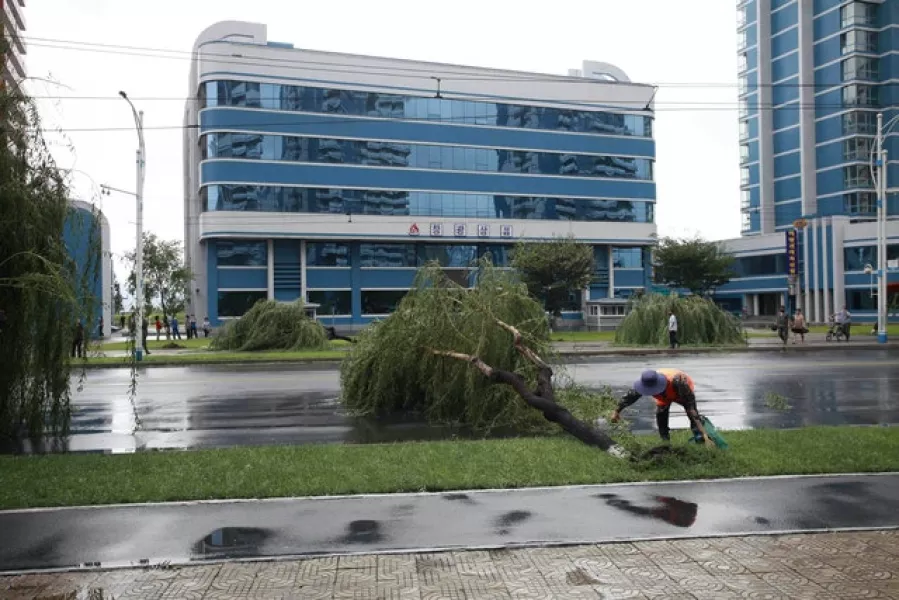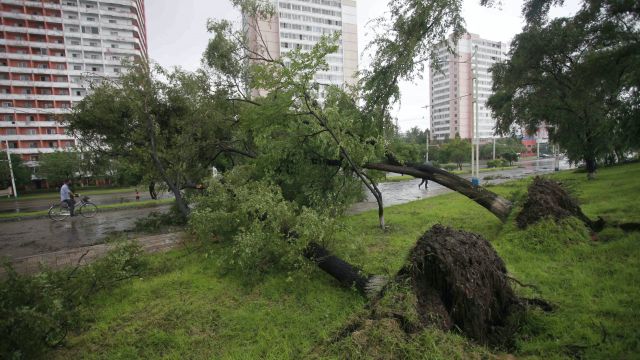No casualties were reported in either South or North Korea as a downgraded Typhoon Bavi headed into China after passing near the North Korean capital Pyongyang, South Korea’s weather agency said.
Bavi had maximum winds of 83mph when it made landfall early on Thursday in a western coastal region of North Korea that is a major source of farming and fishing.

The North’s Korea Central TV showed footage of snapped trees and utility poles and flooded roads. It reported damage to houses and public facilities in North Hwanghae and South Hwanghae provinces, where the typhoon made landfall.
Roads were also flooded in the city of Nampo, which is closer to Pyongyang.
In South Korea, the Ministry of the Interior and Safety reported damage to buildings, walls, roads and other structures.
By Thursday afternoon, power had been restored to most of more than 9,300 South Korean homes cut off by the storm, including 3,500 in cities and towns near Seoul and around 900 in the southern resort island of Jeju, which was hit by the typhoon on Wednesday.

More than 470 domestic flights in and out of Jeju and the southern mainland city of Busan were cancelled. South Korean authorities also halted some rail services, shut down public parks and sea bridges and moved hundreds of fishing boats and passenger vessels to safety.
Workers in Seoul and other major cities are now restoring makeshift coronavirus testing stations that had been dismantled amid concern the tents and booths would not have withstood the strong winds.
The North’s official Korean Central News Agency said earlier this week that leader Kim Jong Un had called for thorough preparations to minimise casualties and damage from the typhoon. Fishing boats were moved and buildings, farms and railways were reinforced, according to state media.







